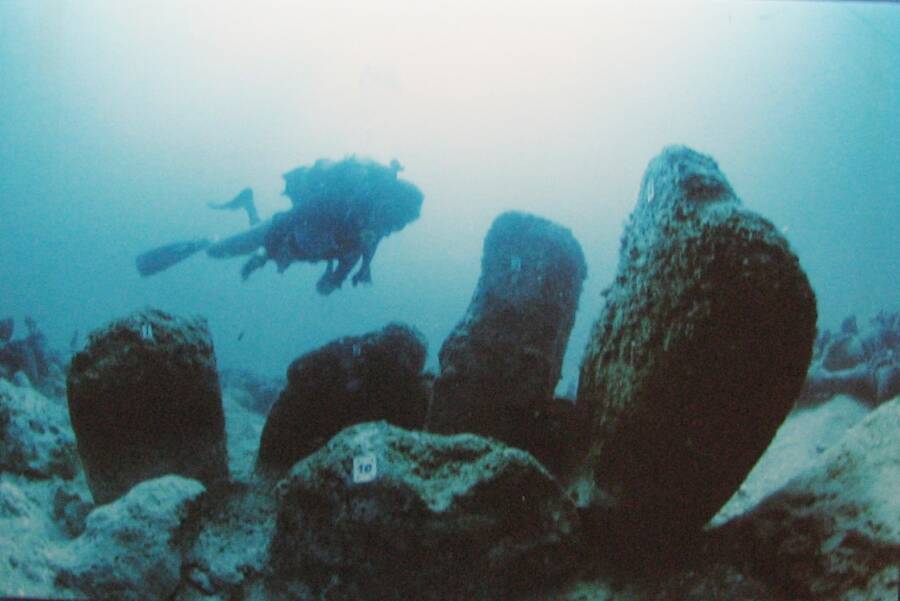Atlit-Yam, Israel’s Submerged Neolithic Vilalge

Wikimedia CommonsAtlit Yam is an ancient village, believed to be between 8,300 and 8,900 years old.
Atlit-Yam, near Haifa, Israel, dates from around 7000 B.C.E., mnaking it one of the world’s oldest sunken civilizations, an ancient village that comprised nearly 10 acres of land in a time before humankind had devised the idea of streets.
Today, it remains eerily well-preserved, with many of its ancient structures — stone houses, fireplaces, storage facilities, and wells — still standing, and the skeletons of the deceased resting undisturbed in their graves.
For nearly 9,000 years, the village sat unnoticed and undisturbed beneath the water and sand — that is, until 1984, when some of its structures were revealed to marine archaeologist Ehud Galili.
According to a New Scientist report from 2009, Galili had been surveying the area for shipwrecks when he first spotted the structures of Atlit-Yam, as the shifting sands began to reveal the lost village.
Worried that the sand quarrying would destroy the ancient village, Galili began visiting the site each winter, charting newly visible areas as the sands revealed them and removing any artifacts that seemed to be in danger of being damaged by the ocean tides.
Since then, a number of fascinating artifacts have been discovered at the site, ranging from animal bones to massive 1,300-pound stone megaliths formed in a semicircle. In 2008, the remains of a woman and child revealed the earliest known cases of tuberculosis, and tools found at the site revealed that the ancient inhabitants had likely dived for seafood.
Overall, Atlit-Yam presented historians with remarkable new insight into ancient life, further proving that prehistoric humans were often more advanced than previously believed.





